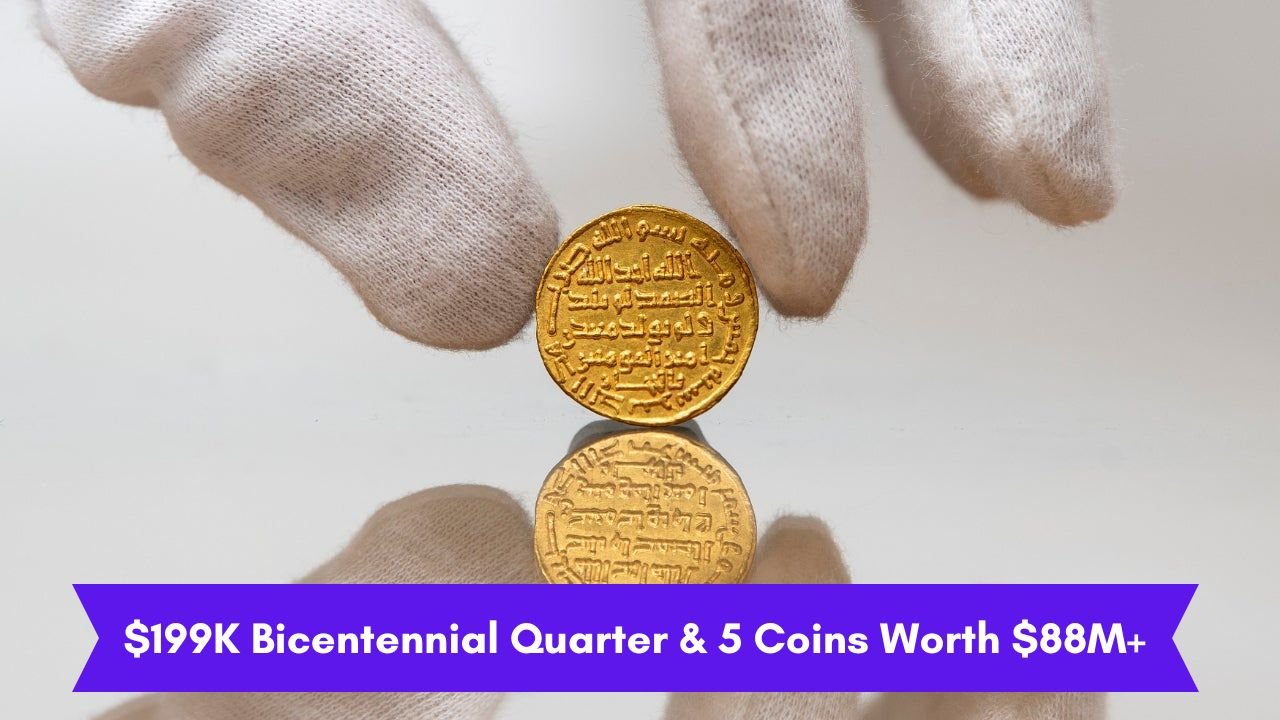Numismatists and collectors are ever eager to search for rare coins that can be worth a fortune. Some of the coins, based on history, low mintage, or peculiar errors, have increased by astronomical amounts. In this piece, we present a rare Bicentennial Quarter worth $199,000 and five more precious coins valued at more than $88 million in total!
$199K Bicentennial Quarter
The 1776-1976 Bicentennial quarter has a special dual-date and drummer boy reverse design. Most are face-value, but a rare 40%-silver variety graded MS68 sold recently for $199,000.
5 Coins Worth $88M+
1913 Liberty Head Nickel

A mere five of these nickels were ever produced and are now among the rarest coins in American history. One sold in an auction for $5 million, and others have sold in similar ranges.
1943 Bronze Lincoln Penny
The majority of pennies produced in 1943 were produced using steel because copper was in short supply during World War II. Some were accidentally struck in bronze, though. One of these unusual pennies was sold for $1.7 million.
1933 Double Eagle Gold Coin
The 1933 Double Eagle is one of the world’s most renowned and valuable coins. One coin in this series set the record for the highest auction price at $18.9 million.
2000 Sacagawea Dollar

There are also dollar coins with a novel “Cheerios” look on the back. Distributed among chosen families through a promotional offering, these can fetch as high as $25,000 at present.
1794 Flowing Hair Silver Dollar
Attested to be the very first dollar coin printed by the American government, this 1794 Flowing Hair Silver Dollar holds a place of historical significance. One in exquisite condition was bought for $10 million.
Why Are Some Coins Worth So Much?
These rare coins base their value upon a number of considerations:
- Minting Errors: Errors in the coin manufacturing process may make some coins rare. Double strikes, missing elements, or misaligned elements are examples of such errors. These errors render the coins rare and highly sought after.
- Rarity: The low coin number or coins with those who were never released in circulation are exceptionally valuable. The few coins available, the greater the demand between collectors.
- Historical Significance: Coins that mark important historical events or milestones often have additional values. For example, the Bicentennial quarter remembers the 200th anniversary of the US independence.
- Condition: Character services such as PCGs or NGC (Numismatic Guaranty Corporation) evaluate coins based on their position, or “character”. Mint conditions (MS65 or higher) are much more valuable than those with coins and tears.
How to Spot Rare and Valuable Coins
- Examine the Date and Mint Mark: Look for the main date or unique coin brand. Rare years of low production or coin coins are often more valuable.
- Check for Errors: Use a magnifying glass to detect misunderstanding, double strike or other deviations.
- Assess the Condition: The better the condition of the coin, the higher the character and value. See signs of wear or damage.
- Research Online: Use resources such as PCGs -coin Facts or NGC Price Guides to compare your coin to known variants.
- Get Professional Grading: Submit your coin in a prestigious grading service for an official evaluation. This step is important to confirm its authenticity and market value.
FAQ’s
How do I know my coin is valuable?
Look for the main date, coin marks and errors. Compare your coin with resources like PCGs price guides or consult a professional grading.
Can I clean my coins to increase the value?
No, Cleaning coins can reduce the value by damaging the surface and naturally patina. Always leave coins in your original state.



